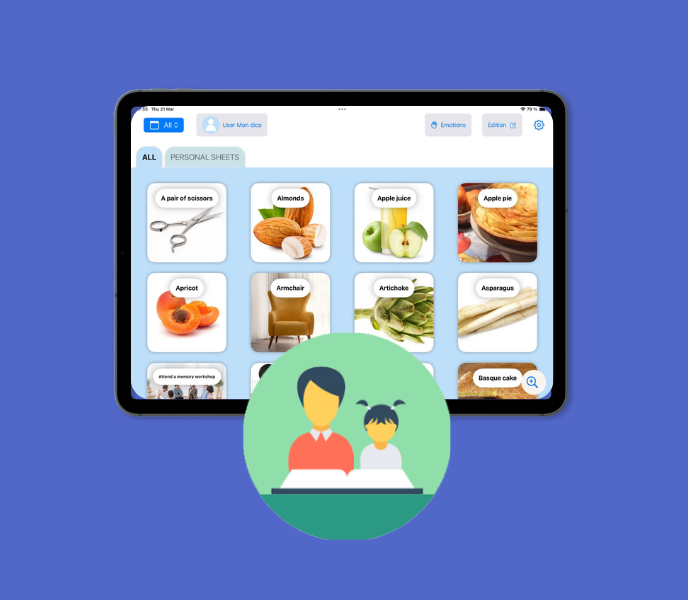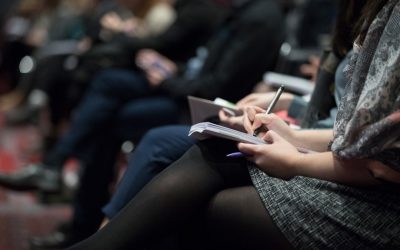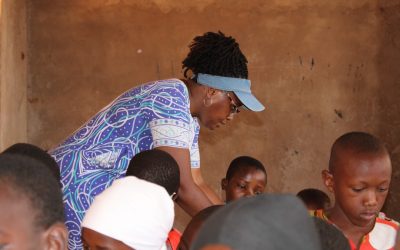Individuals with special needs often face unique challenges when it comes to communication. These challenges can vary depending on the specific disability or disorder, but they can significantly impact an individual’s ability to express themselves, understand others, and engage in meaningful interactions. Enhancing communication is essential and can be done through routines.
Communication is a fundamental aspect of human interaction and plays a crucial role in our overall well-being and quality of life. Therefore, it is essential to address these challenges and provide support and strategies to enhance communication skills for individuals with special needs.
Communication challenges can manifest in various ways for individuals with special needs. Some may struggle with verbal communication, finding it difficult to articulate their thoughts and ideas. Others may have difficulty understanding spoken language or following directions.
Nonverbal communication, such as body language and facial expressions, can also be challenging for some individuals. These difficulties can lead to frustration, isolation, and a decreased ability to participate fully in daily activities and social interactions.
Addressing these communication challenges is crucial for the overall well-being and quality of life of individuals with special needs. Effective communication skills are essential for building relationships, expressing needs and desires, participating in educational and vocational settings, and engaging in social activities.
By providing support and strategies to enhance communication skills, we can empower individuals with special needs to communicate effectively, increase their independence, and improve their overall quality of life.
Importance of Daily Routines in Enhancing Communication
Daily routines can play a significant role in enhancing communication skills for individuals with special needs. Routines provide structure and predictability, which can be particularly beneficial for individuals who may struggle with transitions or changes in their environment.
By establishing consistent routines, individuals with special needs can develop a sense of security and familiarity, which can help reduce anxiety and promote engagement in communication.
Daily routines also provide opportunities for individuals with special needs to practice and develop their communication skills. For example, during mealtime routines, individuals can learn to request specific foods, express preferences, and engage in conversation with others.
Bathing and dressing routines can be used to target specific communication goals, such as following directions and using descriptive language. Playtime and leisure activities can promote turn-taking, social communication, and the use of expressive language.
By incorporating communication goals into daily routines, individuals with special needs can practice and reinforce their skills in a natural and meaningful context. This approach allows for consistent and repetitive practice, which is essential for skill development.
Additionally, the use of routines provides a familiar and comfortable environment for individuals to practice their communication skills, reducing anxiety and increasing their confidence in using their communication abilities.
Understanding the Different Types of Communication Disorders
There are various types of communication disorders that individuals with special needs may experience. These disorders can significantly impact an individual’s ability to communicate effectively and can vary in severity and presentation. Some common communication disorders include autism spectrum disorder (ASD), Down syndrome, and cerebral palsy.
Autism spectrum disorder is a neurodevelopmental disorder that affects social interaction, communication, and behavior. Individuals with ASD may have difficulty with verbal communication, such as using and understanding language.
They may also struggle with nonverbal communication, such as making eye contact or understanding facial expressions. Some individuals with ASD may be nonverbal or have limited speech abilities.
Down syndrome is a genetic disorder that causes intellectual disabilities and physical characteristics. Individuals with Down syndrome may have delays in speech and language development.
They may have difficulty articulating words clearly or forming sentences. However, with appropriate support and intervention, many individuals with Down syndrome can develop effective communication skills.
Cerebral palsy is a group of neurological disorders that affect movement and coordination. Depending on the type and severity of cerebral palsy, individuals may have difficulty with speech production or controlling the muscles necessary for clear speech.
Augmentative and alternative communication (AAC) systems, such as communication boards or speech-generating devices, may be used to support communication for individuals with cerebral palsy.
Understanding the specific communication challenges associated with these disorders is essential for developing appropriate strategies and interventions to support individuals with special needs in their communication development.
Strategies for Enhancing Communication During Mealtime Routines
Mealtime routines provide excellent opportunities for promoting communication and language development for individuals with special needs. Here are some strategies that can be used to enhance communication during mealtime:
1. Use visual aids: Visual aids, such as picture schedules or visual menus, can help individuals with special needs understand and communicate their preferences during mealtime. These visual supports can provide a visual representation of the meal options and help individuals make choices and express their desires.
2. Model language: During mealtime, caregivers and therapists can model appropriate language and communication skills. For example, they can label foods, describe tastes and textures, and ask questions to encourage conversation. Modeling language helps individuals with special needs learn new vocabulary and sentence structures.
3. Encourage turn-taking: Mealtime routines provide opportunities for turn-taking and social interaction. Caregivers can encourage individuals to take turns speaking, listening, and responding during mealtime conversations. This practice helps develop conversational skills and promotes social communication.
4. Target specific communication goals: Mealtime routines can be used to target specific communication goals, such as requesting items, labeling foods, or using descriptive language. Caregivers and therapists can create opportunities for individuals to practice these skills during mealtime by providing choices, asking questions, or engaging in conversation.
By incorporating these strategies into mealtime routines, individuals with special needs can develop their communication skills in a natural and meaningful context.
Enhancing Communication During Bathing and Dressing Routines
Bathing and dressing routines offer unique opportunities to enhance communication skills for individuals with special needs. These routines can be used to target specific communication goals and promote language development.
Here are some strategies for enhancing communication during bathing and dressing routines:
1. Use visual supports: Visual supports, such as visual schedules or step-by-step picture guides, can help individuals with special needs understand and follow the sequence of steps involved in bathing and dressing. These visual aids provide a visual representation of the tasks and can support individuals in understanding and completing the routine independently.
2. Give choices: Offering choices during bathing and dressing routines can promote communication and decision-making skills. Caregivers can provide options for clothing, toiletries, or bath toys, allowing individuals to make choices and express their preferences.
3. Use descriptive language: Caregivers can use descriptive language during bathing and dressing routines to enhance vocabulary development. For example, they can describe the texture of soap, the color of clothing, or the temperature of the water. This practice helps individuals with special needs learn new words and expand their expressive language skills.
4. Follow directions: Bathing and dressing routines provide opportunities for individuals to practice following directions. Caregivers can give simple instructions, such as “Please hand me the towel” or “Put on your socks,” and encourage individuals to listen and respond appropriately.
By incorporating these strategies into bathing and dressing routines, individuals with special needs can develop their communication skills while engaging in essential self-care activities.
Effective Communication Techniques During Playtime and Leisure Activities

Playtime and leisure activities are essential for enhancing communication and language development for individuals with special needs. These activities provide opportunities for social interaction, turn-taking, and the use of expressive language. Here are some effective communication techniques that can be used during playtime and leisure activities:
1. Encourage social communication: Playtime provides opportunities for individuals with special needs to engage in social interactions with peers or caregivers. Caregivers can encourage social communication by facilitating turn-taking, modeling appropriate social behaviors, and providing opportunities for cooperative play.
2. Use visual supports: Visual supports, such as visual schedules or visual cues, can be used during playtime to support communication and understanding. These visual aids can provide a visual representation of the play activities, rules, or expectations, helping individuals with special needs engage in play and follow the structure of the activity.
3. Model language and expand vocabulary: Caregivers can model appropriate language and expand vocabulary during playtime. They can label objects, describe actions, and ask questions to encourage expressive language skills. This practice helps individuals with special needs learn new words and sentence structures.
4. Target specific communication goals: Playtime activities can be used to target specific communication goals, such as turn-taking, requesting, or using descriptive language. Caregivers and therapists can create opportunities for individuals to practice these skills during playtime by providing prompts, modeling appropriate behaviors, or engaging in structured play activities.
By incorporating these effective communication techniques into playtime and leisure activities, individuals with special needs can develop their communication skills while engaging in enjoyable and meaningful experiences.
Using Visual Aids to Enhance Communication During Daily Routines
Visual aids are valuable tools for enhancing communication and language development for individuals with special needs. These aids provide visual representations of concepts, ideas, or choices, helping individuals understand and express themselves more effectively. Here are some types of visual aids that can be used to support communication during daily routines:
1. Picture schedules: Picture schedules provide a visual representation of the sequence of tasks or activities involved in a routine. They help individuals with special needs understand and follow the steps involved in a routine independently. Picture schedules can be used for various daily routines, such as morning routines, mealtime routines, or bedtime routines.
2. Visual menus: Visual menus are visual representations of food choices or options available during mealtime. They help individuals with special needs make choices and express their preferences during mealtime. Visual menus can include pictures or symbols of different foods or drink options, allowing individuals to point or indicate their choices.
3. Communication boards: Communication boards are visual aids that provide a range of symbols or pictures representing words, phrases, or concepts. They can be used to support individuals with limited verbal communication or those who use augmentative and alternative communication (AAC) systems. Communication boards can be customized to meet the individual’s specific communication needs and can be used during various daily routines.
4. Visual cues: Visual cues are visual prompts or reminders that support understanding and communication. They can be used to highlight important information, provide reminders, or prompt specific actions. Visual cues can include pictures, symbols, or written words and can be used during daily routines to support communication and understanding.
By using visual aids to support communication during daily routines, individuals with special needs can enhance their understanding, express themselves more effectively, and increase their independence in daily activities.
Enhancing Communication During School and Learning Routines
School and learning routines provide excellent opportunities for enhancing communication and language development for individuals with special needs. These routines offer structured environments where individuals can practice and develop their communication skills in educational settings. Here are some tips for encouraging communication during school and learning routines:
1. Provide visual supports: Visual supports, such as visual schedules or visual cues, can help individuals with special needs understand and follow the structure of school and learning routines. These aids provide a visual representation of the tasks, expectations, or rules involved in the routine, supporting understanding and communication.
2. Encourage participation: Caregivers and teachers can encourage active participation during school and learning routines by providing opportunities for individuals to contribute their ideas, ask questions, or share their thoughts. This practice promotes engagement in communication and fosters a sense of ownership and empowerment.
3. Use interactive activities: Interactive activities, such as group discussions, cooperative projects, or role-playing exercises, can promote communication and social interaction during school and learning routines. These activities provide opportunities for individuals to practice their communication skills in a collaborative and supportive environment.
4. Incorporate therapy goals: School and learning routines can be used to target specific communication goals identified by therapists. Caregivers and teachers can collaborate with therapists to incorporate therapy goals into daily activities and provide opportunities for individuals to practice and reinforce their communication skills.
By incorporating these strategies into school and learning routines, individuals with special needs can develop their communication skills, participate actively in educational settings, and achieve their academic goals.

Collaborating with Caregivers and Therapists to Enhance Communication
Collaboration between caregivers and therapists is essential for enhancing communication and language development for individuals with special needs. Caregivers play a crucial role in supporting communication skills in daily routines, while therapists provide specialized knowledge and expertise in communication interventions. Here are some tips for collaborating with caregivers and therapists to enhance communication:
1. Share information: Caregivers should share relevant information about the individual’s communication abilities, challenges, and goals with therapists. This information helps therapists develop appropriate strategies and interventions to support communication development effectively.
2. Provide training and resources: Therapists can provide caregivers with training and resources to support communication skills at home. This may include strategies, visual aids, or activity ideas that caregivers can incorporate into daily routines to enhance communication.
3. Establish consistent routines: Consistency is key when it comes to supporting communication skills for individuals with special needs. Caregivers and therapists should work together to establish consistent routines that provide structure and predictability for the individual. This consistency helps individuals feel secure and comfortable, promoting engagement in communication.
4. Communicate regularly: Regular communication between caregivers and therapists is essential for monitoring progress, discussing challenges, and adjusting strategies as needed. Caregivers should provide feedback on the effectiveness of interventions, while therapists can offer guidance and support based on their expertise.
By collaborating with caregivers and therapists, individuals with special needs can receive consistent and comprehensive support to enhance their communication skills and achieve their communication goals.
Measuring Progress and Celebrating Success in Communication Development
Measuring progress and celebrating success are essential components to enhance communication for individuals with special needs. It is important to track progress to ensure that interventions and strategies are effective and to make adjustments as needed. Celebrating successes helps individuals feel motivated, confident, and proud of their achievements. Here are some tips for measuring progress and celebrating success in communication development:
1. Set specific goals: Setting specific, measurable goals is essential for tracking progress in communication development. Goals should be individualized, meaningful, and achievable. Caregivers and therapists can work together to identify specific communication goals and develop strategies to target those goals.
2. Use data collection tools: Data collection tools, such as checklists or rating scales, can be used to track progress in communication development. Caregivers and other therapists can use these tools to record observations, track milestones, and measure progress over time.
3. Celebrate milestones: Celebrating milestones and achievements is important for boosting motivation and self-esteem. Caregivers, therapists and others can acknowledge and celebrate small victories along the way, such as using a new word or successfully following a direction.
4. Reflect on progress: Regular reflection on progress allows caregivers, therapists, and individuals with special needs to assess the effectiveness of interventions and make adjustments as needed. Reflecting on progress also provides an opportunity to set new goals and continue working towards improvement and growth. It allows for a deeper understanding of what strategies and interventions are working well and which ones may need to be modified or replaced.
By reflecting on progress, caregivers, therapists, and individuals with special needs can identify any barriers or challenges that may be hindering progress and develop new strategies to overcome them.
This process of reflection and adjustment is crucial in ensuring that interventions are tailored to the specific needs and abilities of the individual, leading to more effective outcomes. Additionally, reflecting on progress helps to maintain motivation and momentum, as it allows individuals to see how far they have come and set new goals to continue their journey towards success.
MY DICO
My Dico is an app developed by Dynseo that includes various features. The app, available on IOS devices is adapted for people with special needs like non-verbal individuals. The user will have access to a visual Dictionary to express its thoughts and needs, an Emotions window and a Routines window with sequencing and games to learn them. My Dico has been created in order to be the daily live’s communication and autonomy assistant for people with linked impairments.

Other articles that might interest you:
How Parents Can Contribute to Teacher Training
As we delve into the realm of education, it becomes increasingly clear that teacher training is not merely a...
Differentiated Instruction Approaches: Training and Practical Application
Differentiated instruction is a pedagogical approach that recognizes the diverse needs of students in a classroom. It...
Key Skills Teachers Need to Support Students with Special Needs
As we embark on our journey to support children with special needs, it is essential for us to cultivate a deep...




